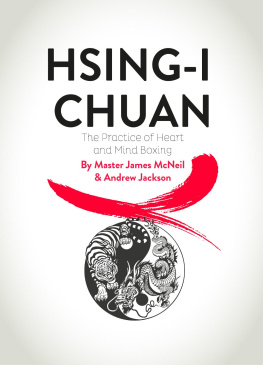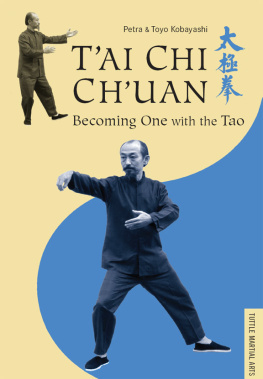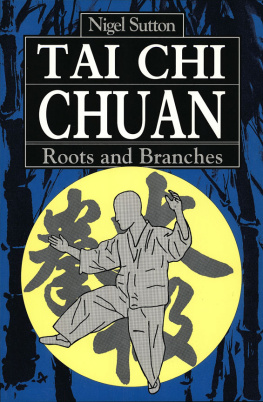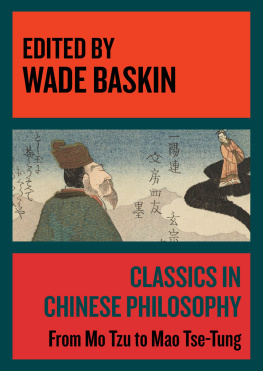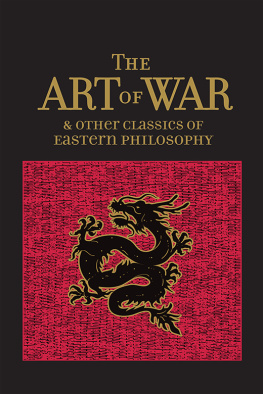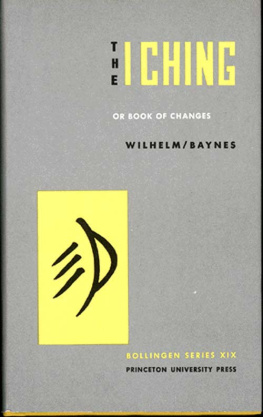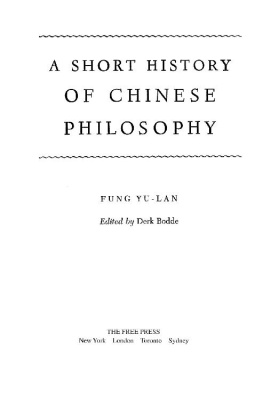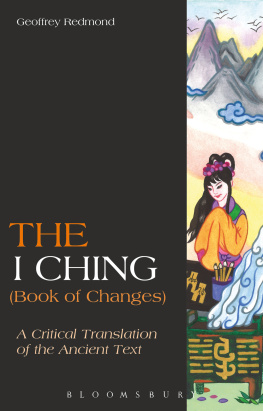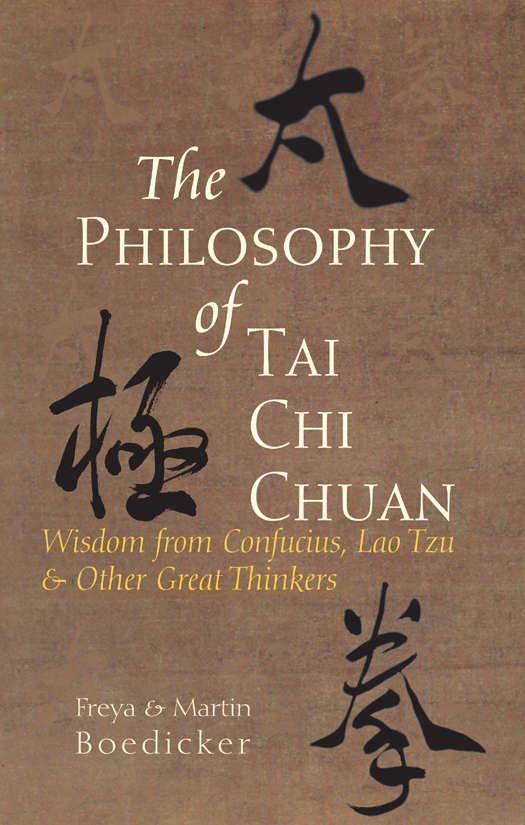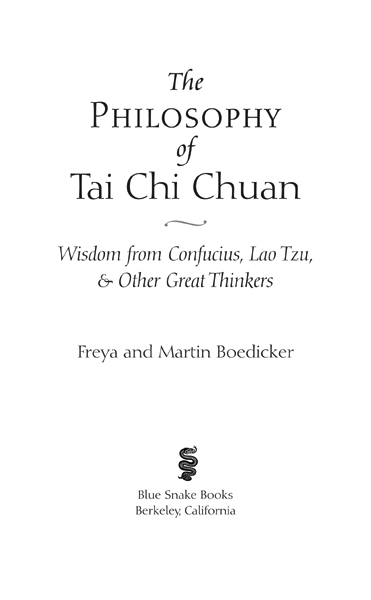Copyright 2009 by Freya and Martin Boedicker. All rights reserved. No portion of this book, except for brief review, may be reproduced, stored in a retrieval system, or transmitted in any form or by any meanselectronic, mechanical, photocopying, recording, or otherwisewithout written permission of the publisher. For information contact Blue Snake Books c/o North Atlantic Books.
Published by Blue Snake Books
Blue Snake Books publications are distributed by
North Atlantic Books
P.O. Box 12327
Berkeley, California 94712
Cover design by Susan Quasha
Cover calligraphy by Huang Zhongjun
The Philosophy of Tai Chi Chuan: Wisdom from Confucius, Lao Tzu, and Other Great Thinkers is sponsored by the Society for the Study of Native Arts and Sciences, a nonprofit educational corporation whose goals are to develop an educational and cross-cultural perspective linking various scientific, social, and artistic fields; to nurture a holistic view of arts, sciences, humanities, and healing; and to publish and distribute literature on the relationship of mind, body, and nature.
North Atlantic Books publications are available through most bookstores. For further information, call 800-733-3000 or visit our websites at www.northatlanticbooks.com. or www.bluesnakebooks.com.
Library of Congress Cataloging-in-Publication Data
Boedicker, Freya, 1970
[Philosophisches lesebuch zum Tai chi chuan. English]
The philosophy of Tai chi chuan : wisdom from Confucius, Lao Tzu, and other great thinkers / Freya and Martin Boedicker.
p. cm.
eISBN: 978-1-58394-439-4
1. Philosophy, ChineseTo 221 B.C. 2. Tai chi. I. Boedicker, Martin, 1965 II. Title. III. Title: Wisdom from Confucius, Lao Tzu, and other great thinkers.
B126.B55 2009
181.11dc22
2008038862
v3.1
Acknowledgments
The greatest thanks to our teachers:
Ma Jiangbao
(Wu Tai Chi Chuan)
Armin Sievers
(East-Asia-Science)
Dr. Yanqian von der Lippe-Fan
(Chinese language)
And to our editor:
Kit Gerould
This book would not exist without them.
Contents
Introduction
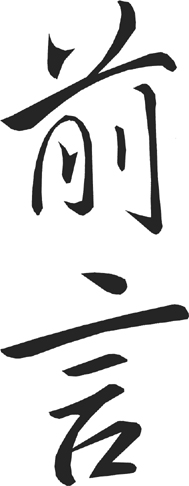
Introduction
T AI C HI C HUAN, THE ART AND the practice, is deeply imbued with Chinese philosophy. To learn Tai Chi Chuan is therefore not only to have the adventure of engaging in an exotic form of movement, but also of encountering the profound ideas of Chinese culture and tradition.
It is certainly very fruitful to break away from what is common and taken for granted and to open oneself to new ideas. The rich philosophical thinking of ancient China has fascinated the West for centuries. Those who practice Tai Chi Chuan can experience these ideas in a very special way, because the movements express key concepts of Chinese philosophy. This book should make the close relationship between the philosophical concepts and Tai Chi Chuan even clearer.
We start with a short overview of the history of Chinese philosophy. This is followed by twelve philosophical texts. Each of the twelve is introduced briefly, and then we present parts of the original texts, which have been chosen because they have significance for the student of Tai Chi Chuan.
Throughout this book, we use consistent English translations for Chinese philosophical terms. The Chinese term appears in parentheses following the translation of the concept. These concepts play an important role in Tai Chi Chuan, and they get individual and specific attention in an extensive glossary at the end of the book.
The spelling Tai Chi Chuan is now common in the West, and thus we use that spelling consistently in this book. We have avoided the spelling Taijiquan or others to avoid confusion. The pinyin transliteration is used for all other Chinese terms.
After studying this book the reader will have a better understanding of the world of ideas of Tai Chi Chuan, providing new inspiration for his or her training.
We hope you enjoy this book. It has been a great pleasure to write it.
F REYA AND M ARTIN B OEDICKER
A Brief History of Chinese Philosophy
A CCORDING TO C HINESE HISTORICAL TRADITION , C HINA is said to have been ruled in the third millennium BC by mythic emperors. These included Emperors Fu Xi, Shen Nong, Huang Di (known as the Yellow Emperor), and Yu the Great, who allegedly founded the Xia Dynasty.
Around 2000 BC the first signs of a highly developed civilization began to emerge. In the middle of this millennium, the Shang Dynasty was in power. For the first time, bronze was produced. From this period, texts of oracles survive, carved on the backs of turtles, bronze containers, and bones.
In the eleventh century BC the Shang Dynasty was overthrown by the Zhou tribe. In the following period, the Zhous introduced feudal rule.
The decline of the Zhou Dynasty in the fifth century BC led to the emergence of a series of smaller states. Because of continuous strife and wars between the feudal lords, the time from approximately 480 BC until the unification of the realm in 221 BC is called the period of the warring states. It was a time of hunger and turmoil because of the ongoing wars. The invention of iron and of the plough, along with the introduction of monetary economics and consequent changes, fueled efforts to find new ways of living and new values.
The changes in society resulted in manifold forms of intellectual life. This time is also called the time of the hundred schools of philosophy. At no other time before had speculative thinking been cherished and promoted to such an extent. The competition between different intellectual trends reflects the external conflicts of the time. Among the schools one finds famous representatives such as the Confucians (rujia), the Mohists (mojia), and the Daoists (daojia), as well as the Yin-Yang School (yinyangjia), the Legalists (fajia), the Dialecticans (mingjia), and the Strategists of War (bingjia). Their central themes became social life, the ideal order, and the relationship between human beings and nature. Teaching was based on dialogue, edifying anecdotes, and examples taken from daily life. The plethora of schools of philosophy was not to survive Chinas political unification in 221 BC.
In 221 BC the state of Qin conquered its last rival. Under its lord, from then on called Qin Shi Huangdi, the first unified Chinese state emerged. During the Qin Dynasty, feudalism was abolished in order to promote the process of unification. Measures, laws, and writing systems were harmonized. The Legalist School based on Han Feizi was made the state philosophy. The Legalist School was not concerned with moral questions; its aim was to establish binding laws for everyone and thus to establish a stable political system unified under one ruler. The other schools of philosophy were persecuted and their books and documents burned. Following the death of its first ruler, Emperor Qin Shi Huangdi, in 210 BC, the dynasty declined and the Han Dynasty was established.
The Han Dynasty (206 BC220 AD) severed links with the Legalist School. At the beginning of the dynasty, Liu An, the uncle of the first Han emperor, introduced the work of Daoist Huainanzi. However, this was not accepted as the dominant philosophy. A slightly altered form of Confucianism became the new state philosophy.


